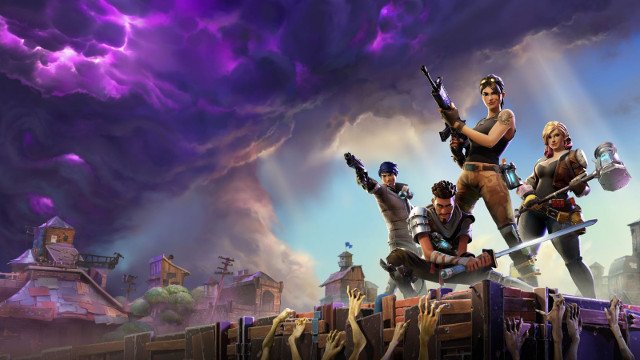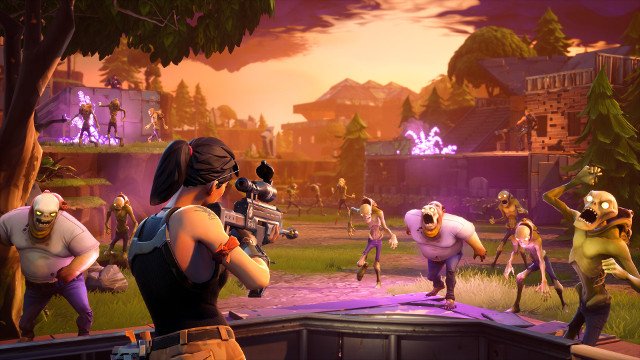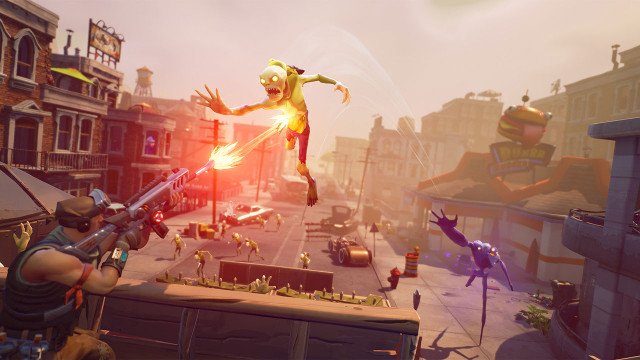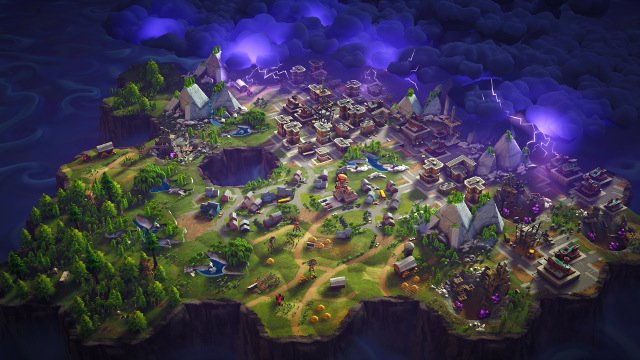We’ve seen a lot of zombie games this generation. It makes sense, most people have an affinity for the undead, and it helps that they make for a fair target as well as an admirable enemy. But at this point many zombie games are beginning to feel homogenous, to a point where it’s hard to remember what make each stand out.
Enter Fortnite, an all-new co-op survival game that features, you guessed it, zombies. Yet, it’s deserving of attention, not only because it’s been made by the award-winning studio at Epic Games, but layers in compelling sandbox elements that allow players to build structures and craft items. It’s neat in concept, but is it any fun to play?
A Life of Construction

Upon first inspection, Fortnite is a familiar game. During the tutorial missions you’re introduced to its zombie-infested world where hordes of nasty creatures would like nothing more than to chew on you like beef jerky. A thin layer of story is delivered using voice overs and occasional interactions, offering just enough context as to make the game avoid feeling like an arcade title. Sound familiar? Dead Rising, Dying Light, and Dead Island immediately spring to mind, but don’t jump to conclusions too quickly.
Where Fortnite separates itself from the competition is with its sandbox elements. Most of the game’s missions involve not only third-person shooter gameplay, but require construction of defensive structures. You’ll spent time erecting defensive perimeters around objectives using walls, flooring, and even traps.
There’s an incredible amount of control that players have over what they build, allowing walls to be turned into fences, have doors built for easy entry, and construction of angled pathways to slow down groups of zombies who approach. With this, creativity is expressed, and experimentation to find optimized layouts is constantly at play.
“There’s an incredible amount of control that players have over what they build…”
Whether you’re with random strangers or friends, it’s a lot of fun to build these structures together. Everyone has their own perspective on what needs to be built for survival, and as these opinions merge you not only learn from the successes of others, but end up with different results nearly every time you queue up to play.
Structurally, Fortnite takes you through a series of missions that are played in four-player lobbies. In most cases, a brief period of setup is provided before swarms of enemies begin approaching objective areas. It is at this time that not only is building a defensive position necessary, but acquiring the resources for each part is mandatory. Players usually run around hacking away at trees, cars, and all sorts of other objects to turn them into usable materials. This element of the game is similar to Minecraft, although presented differently enough as to not feel derivative.
This game flow of harvest, build, combat has good pacing that aids in keeping what is traditionally a monotonous style of game from falling victim to repetition in the early hours. However, as you play longer you may find that issues related to players hoarding resources for future missions and the repetition of gathering begin to arise. If so, you might not remain interested for long.
Defend Yourself

The sandbox elements might be the core competency of Fortnite, but they make up only a minor portion of the experience. Most of your time will be spent combating foes of various qualities. On this front, Fortnite is similarly successful.
The game’s library of weaponry hits all the notes you would expect, from pistols, to shotguns, and even heavy firepower such as rocket launchers. Although the weapon diversity is worth noting, how they feel in the hands is even more of an achievement.
Host on Unreal Engine 4, Fortnite feels fantastic to play. Weapons and movement feel sharp, to a point where energetic players—like myself—can jump around like a jack rabbit with surprising precision, something most third-person shooters don’t achieve. Interacting with the construction tools is immediately available, allowing you to transition from combating foes to throwing up a wall or trap within just a couple button clicks, an important point to note on higher difficulties.
“Fortnite feels fantastic to play.”
On that note, the difficulty of the game veers a little too far into friendly territory for the average gamer. It can seem like the first eight or more hours are spent trying to show you the ropes, when only a couple missions would be necessary. Challenge is present later on, but many players might not be able to hold their attention until then.
Gameplay is reinforced by a solid presentation. Across all three platforms Fortnite is a polished game with a vibrant visual style. The cast of enemies and their environments are impressively detailed, with great animations and audio cues. The only weakness in this regard is the user interface, which can often be cumbersome as it doesn’t follow the logic of most sandbox titles.
Microtransactions Are at It Again

Where Fortnite makes a major misstep is in how it handles progression. You’ll spend some time between missions checking out what new weapons you have found in addition to allocating points into skill and research trees, providing respite from the intensity of missions. Yet, most of the time you’ll feel like you haven’t earned much even after playing for a few hours.
The reward loop is completely out of whack for players who don’t invest in the microtransaction market. If you don’t spend real-life money in the game, then you’re going to find that most of the stuff you find isn’t even worth the inventory space it requires. You’ll have to spent many hours investing time into finishing missions to find anything of note, and that doesn’t change no matter how high of a level you are.
With this, player interest is crippled by the lack of interesting short and long-term goals. As the initial enjoyment of testing out weapons, leveling, and trying new construction patterns dissipates, what is revealed is a rather simple game that at times borders on mundane.
“The reward loop is completely out of whack for players who don’t invest in the microtransaction market.”
This is a huge surprise given that the game was in beta for many months, and currently has a minimum $40 price tag. At this point, the game is built for its free-to-play debut in 2018 where it’ll likely be worth checking out for a few hours with friends, yet charges you up-front to get started.
That’s not to say that some gamers won’t fall in love with it, though. Players who don’t rely on progression to incentivize long-term play, and find themselves playing Horde-style cooperative games for many hours may just find a gem here. And as post-launch patches arrive, it’ll provide additional reason to keep coming back for casual fun.
Conclusion
Fortnite‘s polished gameplay and visual charm stands out from the hordes of other zombie games that have arrived in the past few years. When it hits free-to-play in 2018 it’s going to be a compelling product for anyone who enjoys cooperative games. For now it’s held back by an invasive microtransaction model and design imperfections that keep it from being another trophy for Epic Games.
Jonathan Leack is the Executive Editor of GameRevolution. You can follow him on Twitter @JonnyBeoulve.
A PC copy of Fortnite was provided by its publisher. Fortnite is available on PC, PS4, and Xbox One.
-
Sharp gunplay and movement controls
-
Crafting structures is intuitive and fun
-
Great presentation
-
Slow difficulty scaling
-
Can be repetitive
-
Poorly designed progression and microtransactions model







